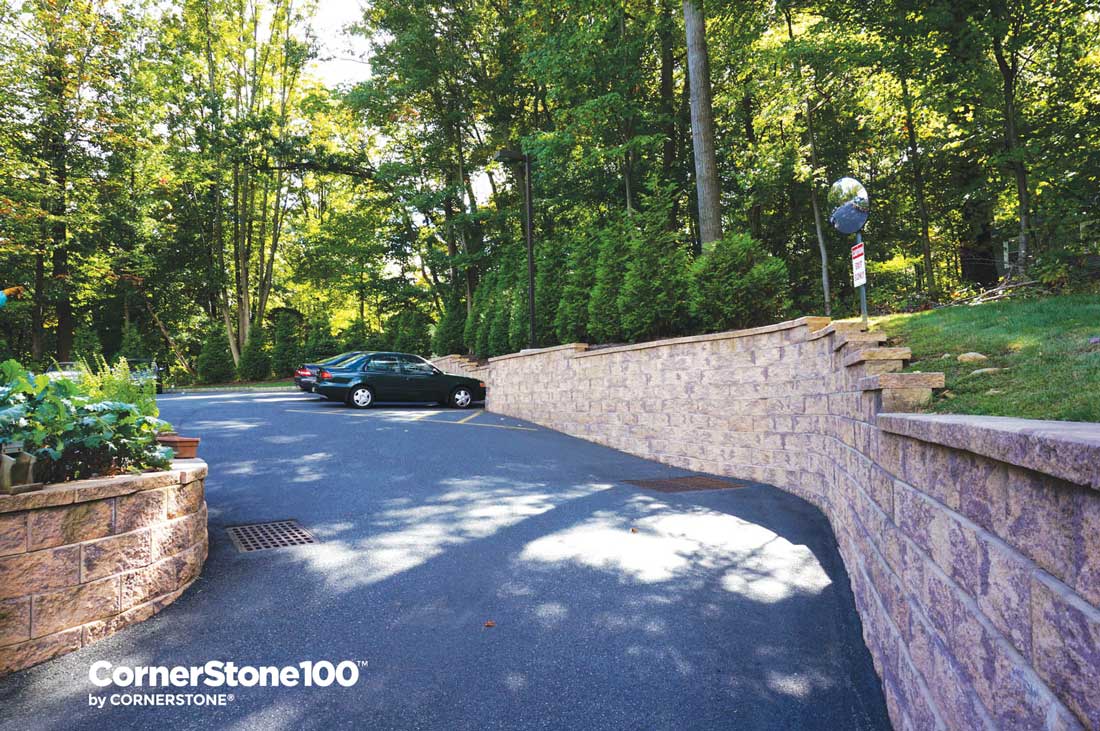Imagine this: You’ve just finished pouring your dream driveway, perfectly smooth and wide. You take a step back, admiring your handiwork, only to notice a slight drop-off at the edge. It may seem like a minor detail, but in reality, that slight slope could lead to a world of trouble. Soil erosion, uneven pavement, and even potential structural issues are all possibilities if left unchecked. This is where driveway retaining walls come in, not just as functional components, but as crucial elements that contribute to the stability, safety, and aesthetic appeal of your property.

Image:
A driveway retaining wall is a structure built to hold back soil and prevent erosion, effectively creating a level, usable surface for your driveway. They are essential for properties with sloping terrain, providing support and preventing the driveway from sinking or shifting over time. Not only do they contribute to the practicality and longevity of your driveway, but they also offer a unique opportunity to enhance the overall look of your landscape. Think of it as a subtle masterpiece, seamlessly blending functionality with aesthetically pleasing design.
Understanding the Fundamentals: Unveiling the Essentials of Driveway Retaining Walls
Driveway retaining walls are engineered structures, and just like any other construction project, a proper understanding of their anatomy and functionality is paramount. The core of a retaining wall typically consists of concrete blocks, interlocking stones, or even stacked timber, carefully arranged to withstand the pressure of the soil behind them. This foundation is often reinforced with drainage systems and backfill material, ensuring stability and preventing water damage.
Types of Driveway Retaining Walls: A Journey Through Design Diversity
Just as there are diverse personalities in the world, so too are there various types of driveway retaining walls, each with its unique strengths and aesthetic appeal.
- Gravity Walls: These structures rely on their own weight to resist the pressure of the soil. Typically constructed with stacked blocks or stones, they offer a classic, timeless look that complements various architectural styles.
- Reinforced Concrete Walls: These robust structures are cast on site and reinforced with steel, offering exceptional strength and durability. They are perfect for challenging terrain and heavy soil loads.
- Segmented Block Walls: These walls utilize precast concrete blocks, a popular choice for their ease of installation and versatility in design.
- Gabion Walls: Constructed using wire baskets filled with rocks, gabion walls provide a unique rustic charm and are an excellent choice for areas requiring drainage.
Factors Influencing the Design: A Comprehensive Assessment
Choosing the right type of retaining wall for your driveway depends on a multitude of factors, including:
- Soil Type: Soil with poor drainage or containing clay can exert significant pressure on the wall, requiring a more robust design.
- Slope and Height: The steeper the slope, the greater the pressure on the retaining wall.
- Aesthetic Considerations: The design of the retaining wall should complement the overall style of your home and landscaping.
- Budget: Various materials and construction methods influence the cost of building a retaining wall.

Image: cornerstonewallsolutions.com
Beyond Aesthetics: The Vital Role of Drainage
While the visual appeal of a retaining wall is important, ensuring proper drainage is critical to its long-term stability. Water buildup behind the wall can exert immense pressure, leading to cracks and eventual failure. Therefore, incorporating a comprehensive drainage system is essential.
- Drainage Pipes: These pipes are installed behind the wall to collect and direct water away from the base.
- Drainage Gravel: A layer of gravel is often placed behind the wall to facilitate water flow.
- Weep Holes: Small openings in the wall allow for water to escape, preventing buildup and pressure.
Professional Expertise: Ensuring a Solid Foundation
Building a retaining wall is not a DIY project for the faint of heart. It requires specialized knowledge, planning, and expertise. Consulting a structural engineer or a licensed contractor is highly recommended to ensure the safety and longevity of your retaining wall. A professional can assess your site, provide tailored designs, and recommend the most appropriate materials and construction techniques.
Expert Insights: Unveiling the Secrets of a Successful Driveway Retaining Wall
Here are some valuable insights from seasoned professionals in the field:
- Planning is Key: Before embarking on any construction project, proper planning is paramount. Determine the size, shape, and materials for your retaining wall carefully.
- Prioritize Soil Compaction: Soil behind the wall should be properly compacted to prevent future settling.
- Invest in Waterproofing: Water-resistant materials and drainage systems are vital to protect the wall from moisture damage.
Driveway Retaining Wall
Empowering Your Driveway: A Foundation for Lasting Beauty and Functionality
A driveway retaining wall is much more than a simple structure. It is an investment in the longevity and aesthetic appeal of your property. By understanding the intricacies of retaining walls and working with professionals, you can ensure a robust, aesthetically pleasing, and functional addition to your driveway. Whether you’re seeking a classical or modern aesthetic, the right retaining wall can transform your driveway into a testament to design, craftsmanship, and enduring stability.





